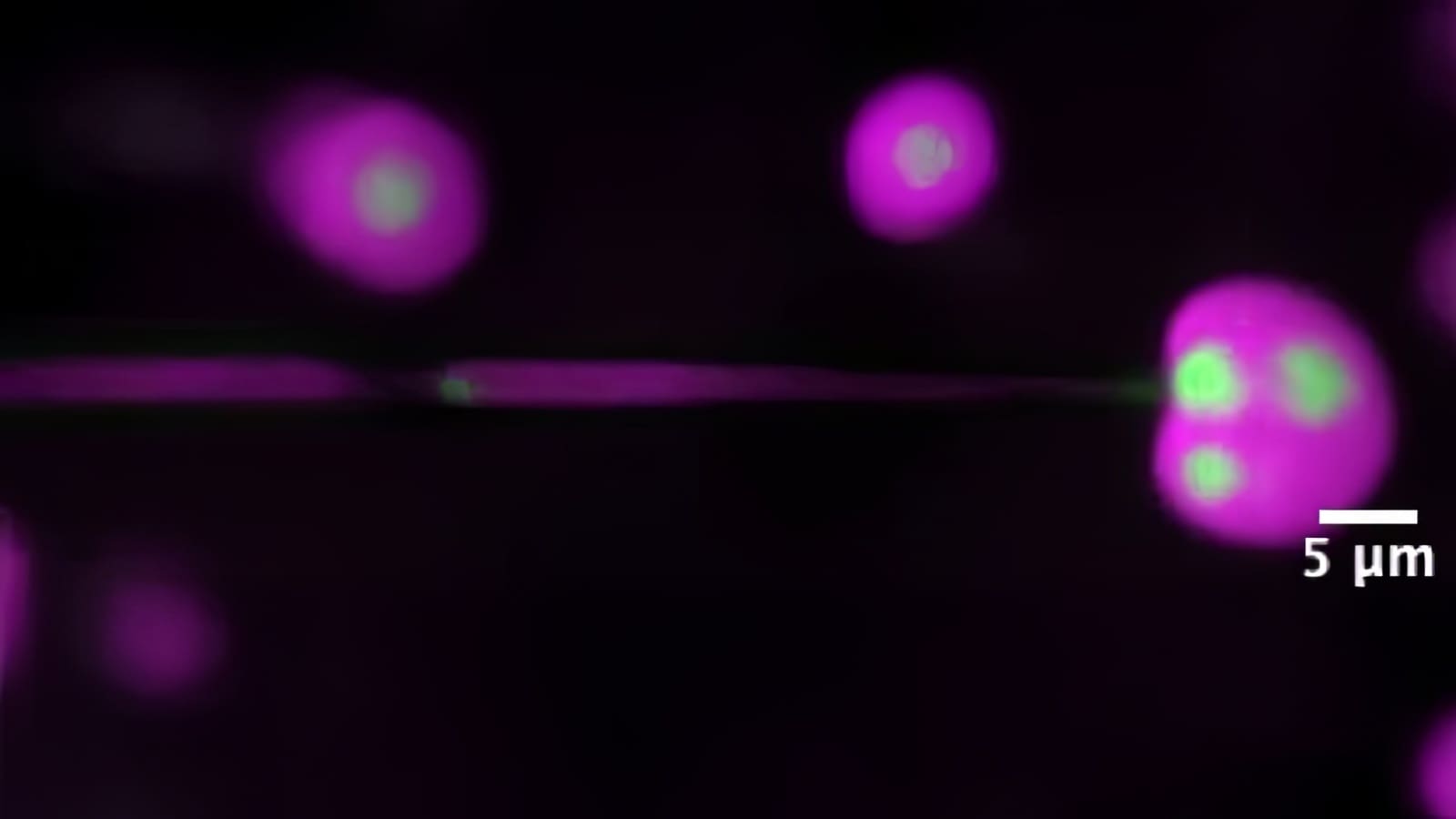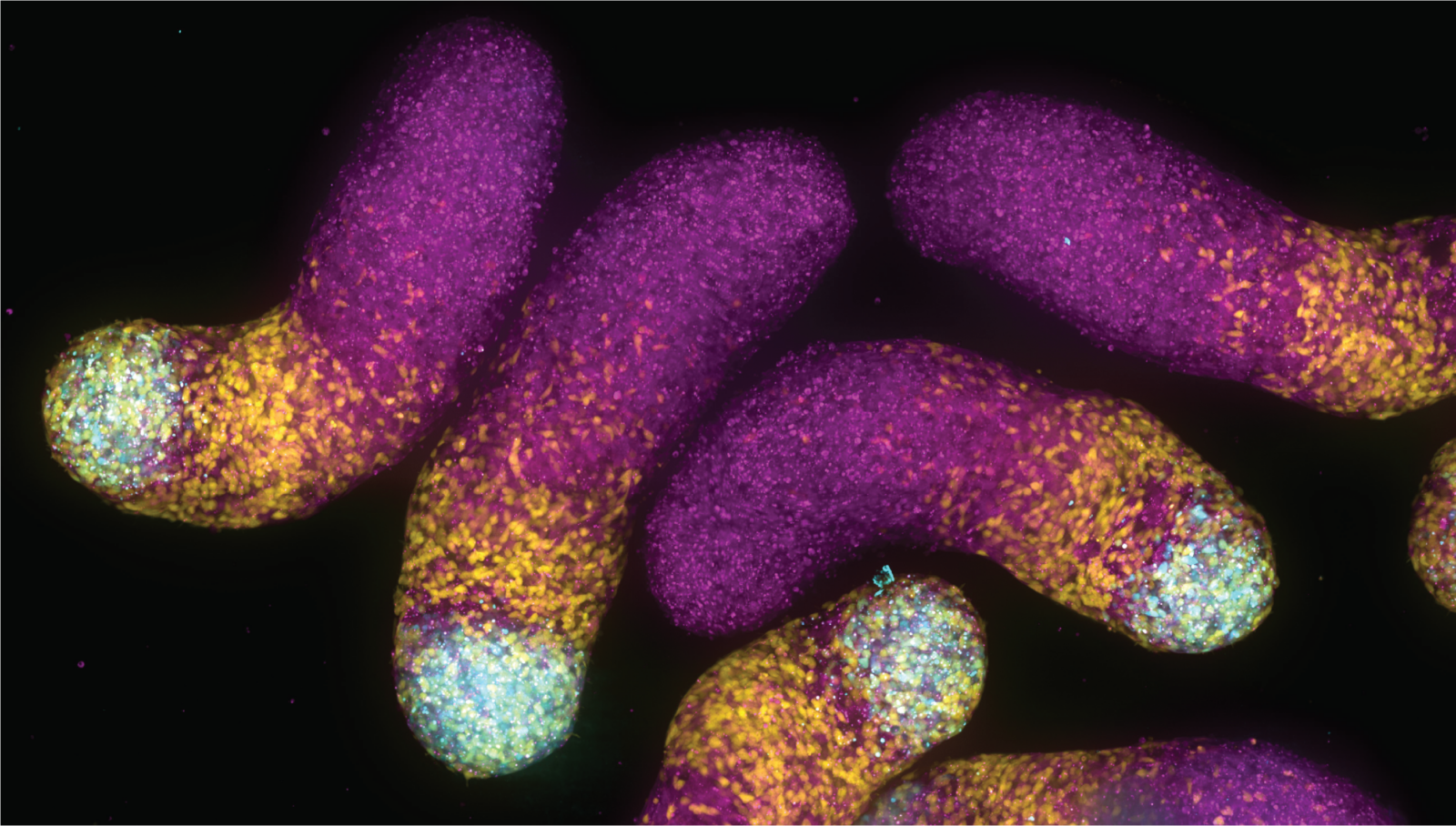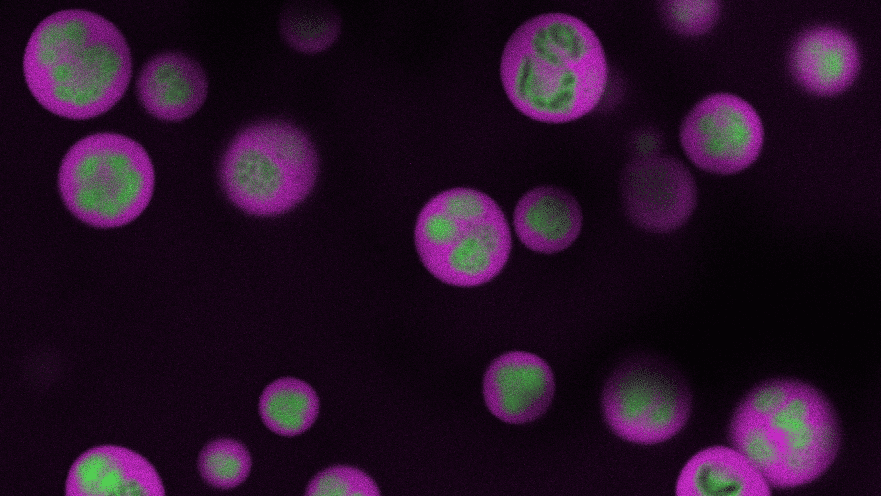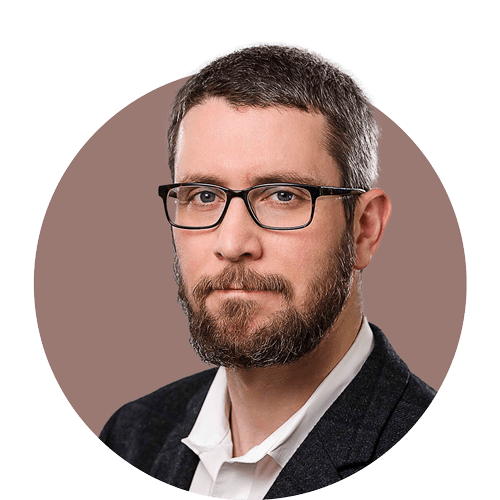
Inspired by mentors, molecular biologist pursues mysteries of the cell
By
on
This is from the series Hispanic Heritage Month

Quinodoz is a postdoctoral research fellow in professor Clifford Brangwynne’s lab in the Department of Chemical and Biological Engineering, where she uses the tools of biophysics and genomics to understand how droplet-like structures called condensates regulate life’s activities — in both health and disease.
Her research career began as an undergraduate at Princeton, where she concentrated in molecular biology and earned certificates in quantitative and computational biology and Latin American studies. Graduating in 2013, she completed two senior theses: one on chemical communication in bacteria, and another on photos and memories of people who were killed or “disappeared” during Argentina’s Dirty War — a project inspired by her own family background.
As a Ph.D. student at Caltech, Quinodoz served as the advocacy committee chair and diversity chair of the graduate student council. She played a leading role in efforts to increase female and minority recruitment to Caltech’s graduate programs.
Earlier this year, she was selected as a Hanna Gray Fellow by the Howard Hughes Medical Institute, an honor that includes funding for her postdoctoral research as well as startup funds for a future role as a principal investigator. The fellowship focuses on supporting researchers from underrepresented groups who have the potential to become academic leaders.
In recognition of Hispanic Heritage Month, Quinodoz recently spoke about some of her earliest scientific experiments, her experiences as an undergraduate at Princeton, and her current research.
How did you first get into science?
In high school, I had a great physics and chemistry teacher who got me excited about research and how science can help explain how things work in the world. During my sophomore year, I read an article about the need to develop alternative fuel sources such as new biofuels, so I asked my teacher if I could learn how to extract ethanol as a fuel from various food sources. I went to the grocery store and bought sugar, molasses and soybeans. Soybeans were apparently a bad choice, because when I went to ferment the soybeans it made a horrendously smelly thing that stunk up the whole lab!
That was my first time tinkering in a lab, doing a simple experiment, and it was fun learning with something basic that I could buy at the store.
How did your interests develop as an undergrad at Princeton?
During my pre-frosh Princeton Preview weekend, I was walking over to the president’s address by Shirley Tilghman, and I managed to bump into her on the way over. She told me about the Integrated Science program, which sounded perfect for me as someone who liked science in high school but didn’t know what I wanted to major in. The ISC program is an introductory science course where you learn biology, chemistry, physics and computer science during the first year. That course was really impactful for my career because it got me to think quantitatively about biological problems and to learn how to do code — things I had never done before but now use on a daily basis in my research. It also got me excited about biology research, which I hadn’t really been exposed to before college.
Through the course, I started to work with the Lewis-Sigler Fellow Eva-Maria Schoetz. At first, I was hired in her lab to do routine tasks of cleaning dishes and taking care of the flatworms [planarians]. But as I cleaned their dishes, I found myself wondering how they divide asexually. Every division, they rip their bodies apart and then regenerate whatever body part they lost during the division. I wanted to understand when they divide and what controls the growth of these body parts.

For my senior thesis, I worked with Bonnie Bassler in molecular biology. It was super exciting to think more on a molecular level of how things work within cells. Specifically, I worked on understanding how bacteria turn genes on or off during a process called quorum sensing: When there are enough bacteria close to each other in a “quorum,” they start to communicate and glow in the dark. So you can read out different genetic programs when they turn on those quorum sensing genes.
What made you decide to pursue a Ph.D. and go further in research?
In undergrad, I found myself wanting to spend all my extra time in the lab, always wanting to do just one more experiment. It just got me hooked. Another thing that made a big difference for me was having two female mentors and role models as an undergrad. Eva-Maria and Bonnie helped me see myself as a scientist, even possibly being a professor in academia — they showed me it was possible for me to pursue that path.
It has helped to have role models in my family, too. My mom is a chemist who works in industry and my dad is a hydrologist. They never pushed me toward science, but growing up they taught me values of hard work and determination that are important in research. Some of my aunts in Argentina are in engineering and biochemistry. During my summer vacations growing up, I would go to Argentina to spend time with my family, and I would go with my aunt to work where she was teaching as a university lecturer.
What is your current research focus?
I went to Caltech for my Ph.D. in biology. There, I got really excited about questions that have informed a lot of my current research. The DNA in every single human cell is almost 6 feet long, but it’s compacted over 300,000 times to fit inside this extremely small nucleus of the cell. I wanted to figure out how this DNA is organized to carry out all the functions of cells.
In my Ph.D. I developed new technologies to map the organization of DNA and RNA molecules in the cell. What brought me back to Princeton for my postdoc was Cliff’s amazing, pioneering work in phase separation, studying how molecules can come together in different parts of the cell within these condensate structures that he has described.
Cliff’s lab has pioneered a lot of exciting tools to probe these structures in living cells. I want to test hypotheses about what these condensates are doing in healthy cells, and what goes wrong in diseases like cancer and neurodegeneration. Specifically, we are hoping to combine tools from Cliff’s lab to form or disrupt condensates in cells and read out their functions using the genomic technologies that I developed in my Ph.D.







